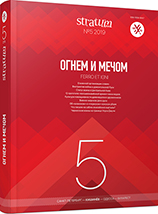«Хочю на вы ити»: воинский этос и ритуально-символическое восприятие войны в домонгольской Руси
“I am coming after you”: Military Ethos and Ritual and Symbolic Perception of Warfare in Pre-Mongol Russia
Author(s): Alexandr A. RomenskySubject(s): History, Anthropology, Archaeology, Military history, Middle Ages, Culture and social structure , 6th to 12th Centuries
Published by: Издательский дом Stratum, Университет «Высшая антропологическая школа»
Keywords: Early Rus’; 10th—13th cc.; military conflict; rite; sacralization of war; military ethos; the heroic epic; weapon;
Summary/Abstract: The article considers the ritual and symbolic context of warfare in Early Russia of 10th—13th c. The chronicle narrations about the first princes have distinct agonal semantics, which is verified by sources of various written traditions. The ritual nature of military conflicts was expressed in their division into separate symbolically significant stages (such as the declaration of war, the verbal squabble, the duel of the strongest fighters, making peace and exchange of gifts). The medieval mind attributed features of sacredness to warfare, showing syncretism of pagan and Christian mentality. Both defensive (shield) and offensive (sword, spear) arms were interpreted as symbols embodying the defense, patronage or triumph of the winners. War and military confrontation were an integral part of everyday life and spiritual culture.
Journal: Stratum plus. Археология и культурная антропология
- Issue Year: 2019
- Issue No: 5
- Page Range: 39-52
- Page Count: 14
- Language: Russian
- Content File-PDF

